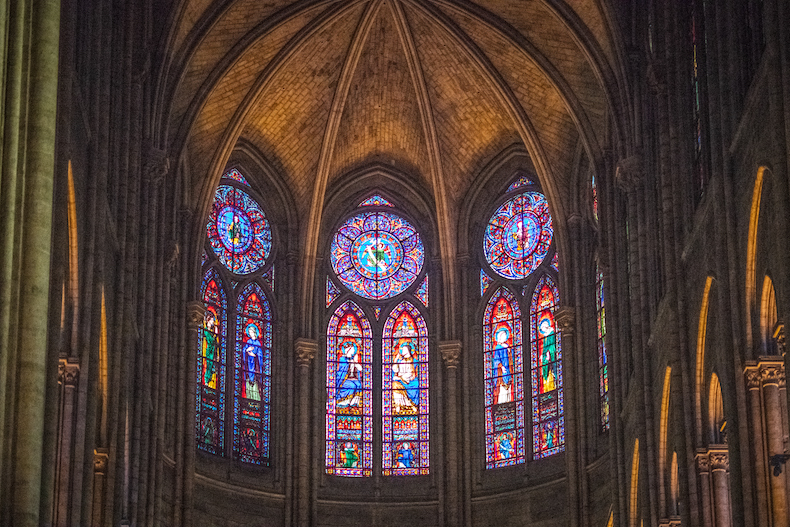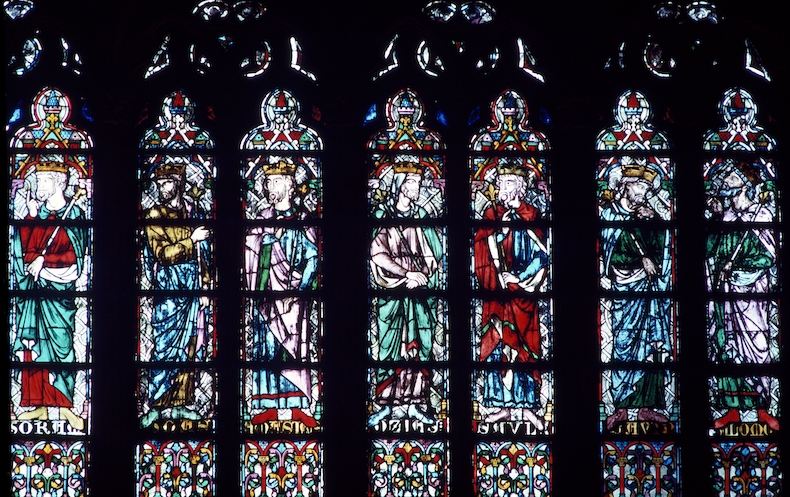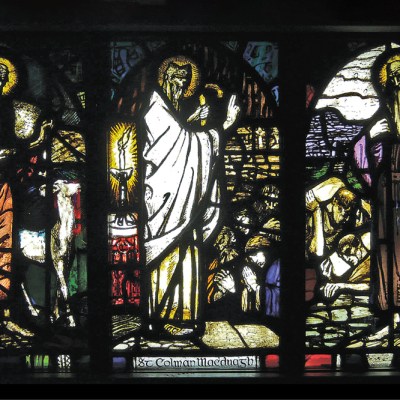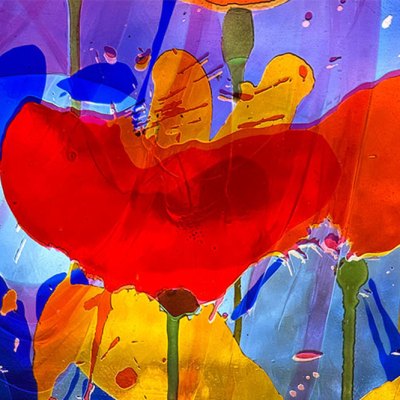Panes of medieval stained glass are often thicker at the base than at the top. For a long time, it was thought that gravity was causing the glass to pool in a centuries-slow ooze at the base, as if, with the passing of time, the windows of Europe’s great cathedrals might melt free from their armatures. Experiments have since shown that glass is moving at a rate that cannot be perceived by the human eye: less than one nanometre per billion years. Yet this myth about the effects of gravity on glass encapsulates the contradictory nature of the material, at once fluid yet seemingly frozen in time. This quality lies at the root of the anxieties that so often surround the medium.
Most recently, these fears have been playing out at Notre-Dame in Paris. After months of public debate, a proposal to replace the historic stained-glass windows in the cathedral with contemporary works was rejected by the National Commission on Heritage and Architecture (CNPA) in France. More than 140,000 people signed a petition against the new windows organised by Didier Rykner of La Tribune de l’Art, who asked: ‘Who gave the Head of State a mandate to alter a cathedral that does not belong to him, but to everyone?’
Notre-Dame is just the latest in a long history of controversies about stained glass. In one of the most notorious examples, only one of Johannes Schreiter’s 22 avant-garde windows planned for Heidelberg Cathedral was ever made or installed. The project was terminated in 1986, caught in the middle of a debate about post-war German self-definition that lasted nine years. While, in 2007, Gerhard Richter’s pixelated window at Cologne Cathedral was condemned by the-then Archbishop of Cologne as ‘better suited to a mosque or another house of prayer’.
Notre-Dame Cathedral. Photo: Edwin Remsberg/VWPics/Universal Images Group via Getty Images

Defining the appearance of so many historic churches and cathedrals, stained glass has often become inseparable from these monuments of Christian and national heritage. Like the buildings themselves, to many, stained glass represents an enduring foil to the flux of the present. Yet this association is at odds with the physical nature of the medium. In reality, stained glass is continually manipulated, its jigsaw-piece nature lending itself to being patched and replaced over time.
Notre-Dame epitomises this mutability. While construction on the medieval cathedral only began in the mid 12th century, by the 13th century its windows were already being updated in line with new developments in gothic architecture and new liturgical demands. It was at this time that Notre-Dame gained its famous lace-like transept facades with their vast rose windows, and the multiplication of new chapels around its perimeter began to destroy the aisle windows that were previously in their place. In one of the most dramatic impositions of modern taste on the medieval building, by the end of the 18th century almost all of Notre-Dame’s windows were replaced with clear glass, catering to the Enlightenment desire for bright, light-filled spaces. Only its rose windows were spared. These contain the only substantial amounts of medieval glass that can be seen in the cathedral today.
What unity we see in Notre-Dame’s windows is therefore a fiction, largely imposed by the 19th-century architect and restorer Eugène Viollet-le-Duc. From 1844 onwards, he privileged the mathematical beauty of the 13th century, embodied by its rose windows, over the accretions and deletions of past centuries. Some windows, including those in the nave chapels that were earmarked for change, were fitted with 13th-century-style grisaille glass: pale, tinted glass that does not compete with the richly coloured roses. This points to a certain hierarchy of space within the cathedral. Even before the fire of 2019, however, the effects of time and taste encroached on his vision, most notably through the installation of abstract designs in the upper windows of the nave in the 1960s.
Old Testament figures beneath the north rose window of Notre Dame Cathedral in Paris. Photo (from c. 2002) by DeAgostini/Getty Images

Notre-Dame has led a particularly eventful existence because of its position at the heart of Paris and of French history. Yet it is only an extreme version of the state in which so much stained glass survives in churches and cathedrals today. Continually replaced and reimagined, stained glass has an intimate and ambiguous relationship to its own destruction, perhaps more so than any other medium. It is the fundamental pliability of glass that has allowed both patrons and iconoclasts alike to rewrite its stories in step with contemporary concerns.
It is exactly these trends that the CNPA sought to halt at Notre-Dame, appealing to the 1964 Venice Charter’s guidelines for the restoration of historic buildings. Certainly, the cathedral’s history reveals a past negligence towards the medium that seems at odds with our own attitudes and international regulations. For centuries, even as church glass was updated, it acted as the ‘Bible of the poor’. While its physical form may have been mutable, its authority was not. In our own time, however, it the authority of the past itself that is often paramount. There are echoes of Ruskin’s famous admiration of the ‘golden stain of time’, essential to the ‘preciousness of architecture’, in the decision to maintain Notre-Dame’s 19th-century glass.
At the heart of the debates about stained glass is the anxiety that soon there could be nothing left of historic church windows; that if they are not destroyed by some crisis, they will be erased by time, modified so slowly that nobody will notice. There’s nothing unique about stained glass in this respect. It is just a particularly visible embodiment of the ancient paradox of the Ship of Theseus: if all the parts have been updated, is the object still the same? In its changeableness, stained glass represents both the fear and potential inherent in rebirth. As France is at a crossroads, it is fitting that stained glass is once again tied to the fortunes of the nation.



